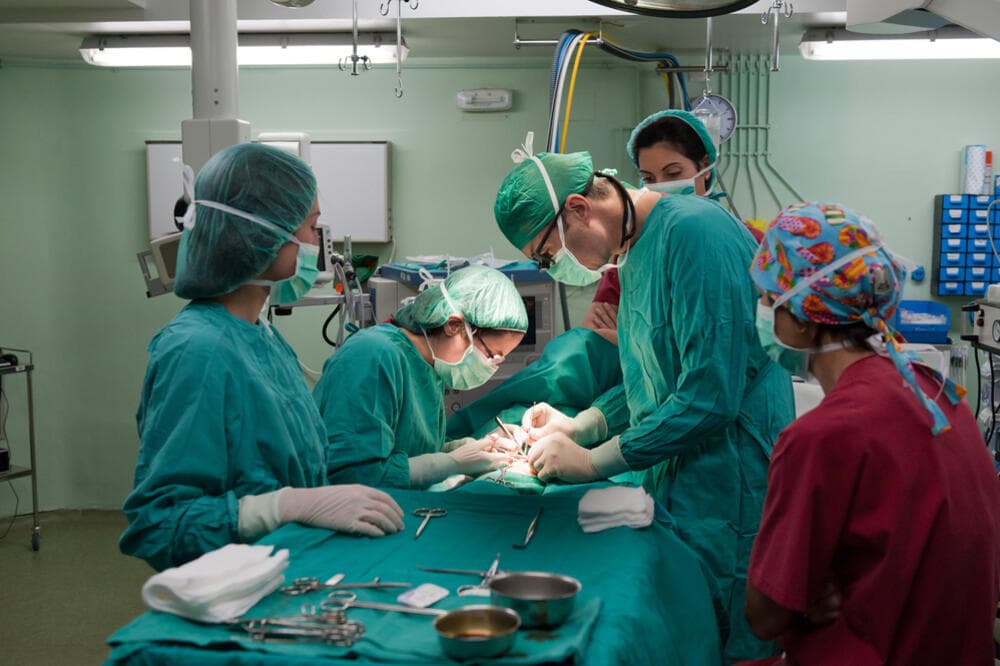Loading News Article...
We're loading the full news article for you. This includes the article content, images, author information, and related articles.
We're loading the full news article for you. This includes the article content, images, author information, and related articles.
Kenya's Caesarean section rate has surged to 18.25% in 2024, exceeding the World Health Organization's recommended threshold and raising concerns about maternal health outcomes and healthcare costs.

Kenya is experiencing a significant increase in Caesarean section (C-section) deliveries, with the national rate reaching 18.25% in 2024. This marks a steady rise from 16.08% in 2020, according to data from the Kenya National Bureau of Statistics (KNBS) and Nairobi Business Monthly. This figure surpasses the World Health Organization's (WHO) recommended upper limit of 15% for medically necessary C-sections, a benchmark that has been in place since 1985. The rising rate has sparked discussions among healthcare professionals and policymakers regarding its implications for maternal health and the broader healthcare system.
The increase in C-section rates in Kenya is not a new phenomenon. The Ministry of Health reported that the rate rose from 14.5% in 2017 to 16.4% in 2021. This upward trend is partly attributed to the government's campaign encouraging women to give birth in health facilities, which has seen facility deliveries increase from 53% in 2017 to 79.3% in 2021. While increasing access to skilled birth attendance is crucial for reducing maternal mortality, it has also coincided with a rise in surgical interventions.
Socioeconomic disparities play a significant role in this trend. Among wealthier Kenyans, the C-section rate has reportedly skyrocketed to 33%, compared to just 5% among the poorest. This suggests that factors beyond medical necessity, such as convenience, fear of labour pain, or perceived safety, may be influencing the choice of delivery method, particularly among affluent demographics.
The Ministry of Health's National Reproductive Health Policy 2022-2032 acknowledges the changing trend in C-section rates, noting that it is not uniform across all 47 counties. While the WHO does not recommend a specific C-section rate for countries, it emphasizes that rates higher than 10% are not associated with reductions in maternal and newborn mortality rates, and anything above 15% may indicate overuse. The Kenyan government, through the Social Health Insurance Fund (SHIF), is set to cover KSh 34,200 for C-sections, compared to KSh 10,000 for normal deliveries, which could further influence choices.
Health practitioners, often operating under heavy workloads and liability concerns, may sometimes default to surgical delivery. Additionally, elective C-sections are sometimes presented as premium services, creating an environment where convenience and profitability intersect with medical practice. This can lead to natural labour being less promoted and the risks associated with routine surgical delivery being undercommunicated.
Many mothers opt for elective C-sections for perceived control and predictability, avoiding the uncertainties and physical strain of labour. However, the recovery period is often longer and more painful than anticipated, impacting mobility and the ability to care for a newborn. Some communities also associate surgical birth with stigma, leading to feelings of guilt or inadequacy among mothers.
While C-sections can be life-saving in emergencies, elective procedures carry inherent risks. These include increased chances of infection, blood loss, blood clots, and longer recovery times. For babies, potential complications include temporary breathing difficulties and a slightly higher risk of certain childhood cancers, such as acute lymphoblastic leukemia (ALL), according to a 2025 study by Sweden's Karolinska Institutet. Natural childbirth, conversely, is associated with faster maternal recovery, lower risk of infection, and benefits for infant immune system development.
The financial implications are also significant. The cost of a C-section in prestigious private hospitals in 2023 ranged from KSh 220,900 to over KSh 360,000, substantially higher than the KSh 80,000 to KSh 100,000 for natural deliveries. This cost disparity places a considerable burden on families and the healthcare system, with insurance claims for C-sections more than doubling between 2018 and 2023.
Despite the rising rates, there is ongoing debate about the optimal C-section rate. While the WHO has historically suggested a 10-15% range, some research indicates that maternal and neonatal mortality rates may continue to decline as C-section rates increase up to 19%. However, beyond this point, no further improvement in mortality rates is observed. The lack of comprehensive data on long-term maternal and perinatal morbidity, as well as psychosocial implications, further complicates the understanding of the full impact of C-sections.
The Ministry of Health continues to develop and disseminate guidelines for quality obstetrics and perinatal care, aiming to reduce maternal and newborn morbidity and mortality. The implementation of the Social Health Insurance Fund (SHIF) is expected to influence delivery choices by standardizing coverage for both natural and surgical births.
Observers will be watching for the impact of SHIF's maternity packages on C-section rates and whether the financial incentives shift delivery trends. Further research is needed to understand the long-term health effects of C-sections on both mothers and children in the Kenyan context, as well as to address the socioeconomic disparities in access to appropriate maternal care.
Keep the conversation in one place—threads here stay linked to the story and in the forums.
Other hot threads
E-sports and Gaming Community in Kenya
Active 6 months ago
Popular Recreational Activities Across Counties
Active 6 months ago
The Role of Technology in Modern Agriculture (AgriTech)
Active 6 months ago
Investing in Youth Sports Development Programs
Active 6 months ago